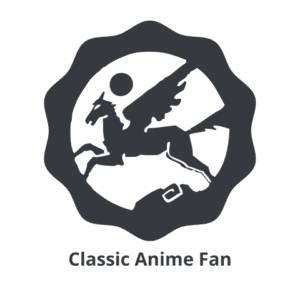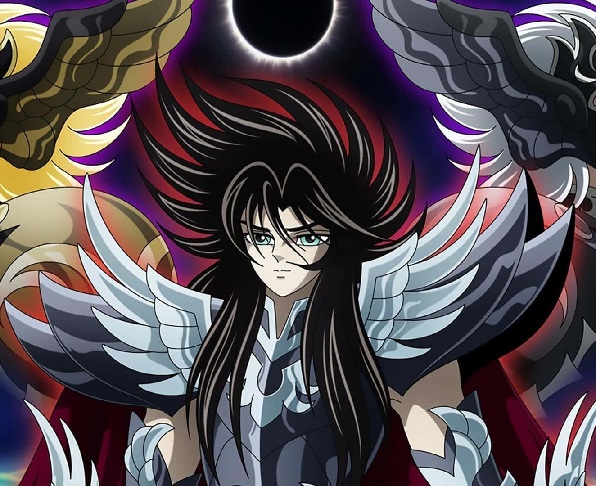Saint Seiya, a popular manga and anime series, abounds with references to Greek mythology.
The names of the main characters are derived from Greek mythology, such as Pegasus Seiya, Dragon Shiryu, and Phoenix Ikki. The concept of the Twelve Zodiac Houses closely resembles the twelve signs of the Greek Zodiac. The character designs, abilities, and the cosmic battles echo Greek myths, with Saints drawing parallels to gods, like Athena and Hades.
The story centers around a group of mystical warriors known as “Saints,” who possess armor based on constellations and fight to protect the Earth.
The intricately woven narrative, complete with Olympian deities and legendary creatures, brings the rich tapestry of Greek mythology to life in a modern, captivating way, making Saint Seiya a testament to the enduring appeal of ancient tales. To show also have a lot of astrology references in it.
Main Greek Mythology References in Saint Seiya
Here are 10 Greek mythology references in Saint Seiya:
- Athena: The central figure in Saint Seiya, Saori Kido, is the reincarnation of the Greek Goddess Athena. She leads the group of Saints in their battles against evil forces.
- Pegasus Seiya: The protagonist, Seiya, wears the armor of Pegasus. In Greek mythology, Pegasus is a winged horse born from the blood of Medusa.
- Dragon Shiryu: Shiryu’s armor is based on the constellation Draco, the dragon. This alludes to Ladon, the dragon-like creature that guarded the Golden Apples in the Garden of the Hesperides.
- Andromeda Shun: Shun’s armor represents the Andromeda constellation. In Greek mythology, Andromeda was a princess saved by the hero Perseus from a sea monster.
- Phoenix Ikki: Ikki’s armor is inspired by the phoenix, a mythological bird associated with resurrection and immortality.
- Cygnus Hyoga: Hyoga’s armor represents the swan constellation Cygnus. The story parallels the myth of Zeus and Leda, where Zeus took the form of a swan.
- Gemini Saga: Saga’s split personality mirrors the twins Castor and Pollux of the Gemini constellation.
- Hades: The main antagonist of one of the story arcs, Hades, is the Greek god of the Underworld.
- Poseidon: Another antagonist, Poseidon, is based on the Greek god of the sea. He is depicted as a powerful adversary.
- Asgard: In a filler arc, the characters venture to Asgard, which draws inspiration from Norse mythology. However, the name itself is reminiscent of Asgard, the realm of the Norse gods. Click here to check the norse mythology references in the show.
These references intertwine Greek mythology’s characters, creatures, and lore with the series’ unique narrative and universe.
1. Athena
The narrative’s focus on her reincarnation, Saori Kido, echoes myths of gods assuming mortal forms.
Athena, a pivotal character in Saint Seiya, reverberates with Greek mythology’s resonance. As the goddess of wisdom and warfare, her protective role aligns with her ancient counterpart’s guardianship over Athens. The reverence and loyalty shown by the Saints parallel the devotion to Athena in ancient Greece.
Her cloth and presence represent both her divine essence and her connection to human affairs.
Athena’s interactions with other deities, such as Poseidon and Hades, echo the intricate relationships among gods in Greek tales.
Her compassionate and just nature exemplifies the qualities attributed to her in mythology. Click here to know about the Buddhist references in Saint Seiya.
By embodying these elements, Saint Seiya fuses Athena’s divine attributes with contemporary battles, creating a saga that perpetuates the legacy of the goddess while crafting a new epic.
2. Pegasus Seiya
Pegasus Seiya, the iconic protagonist of Saint Seiya, embodies a myriad of Greek mythology references.
Named after the mythological winged horse Pegasus, Seiya’s journey mirrors the hero’s quest, akin to Perseus riding Pegasus to slay monsters. The Pegasus constellation serves as a poignant link between Seiya and ancient tales.
His Pegasus Meteor Fist technique, a flurry of punches, echoes the legendary beast’s swift flight and powerful strikes.
Seiya’s determination mirrors the mythological Pegasus’s resilience and free spirit. Moreover, his armor symbolizes both the divine and the mortal, much like Pegasus’s dual origins from Poseidon and Medusa.
By intertwining Seiya’s persona with these mythic elements, Saint Seiya offers a homage to Greek mythology that resonates with modern audiences, immortalizing the legacy of Pegasus in a new epic. Read the alchemy references in Saint Seiya here.
3. Dragon Shiryu
Dragon Shiryu from Saint Seiya is a living embodiment of Greek mythology’s dragon lore.
Named after the constellation Draco, Shiryu’s connection to myth is evident. Like Ladon, the dragon who guarded the Golden Apples in the Garden of the Hesperides, Shiryu is a guardian of justice, his actions reminiscent of the mythical creature’s protective nature.
His Rising Dragon Punch technique, a towering uppercut, draws parallels with a dragon’s fierce ascent. Additionally, Shiryu’s unwavering loyalty to his friends mirrors the steadfast loyalty of dragons in myth.
Even his blindness, used as an advantage in battle, echoes the wisdom often associated with dragons. Click here to learn about Chinese mythology references here.
Through these carefully woven references, Saint Seiya pays homage to the legendary dragon archetype, infusing Dragon Shiryu with both the might and wisdom attributed to these mythical creatures, while creating a new heroic saga.
4. Cygnus Hyoga
Cygnus Hyoga in Saint Seiya encapsulates Greek mythology’s essence through his icy powers and celestial allusions.
Named after the Cygnus constellation, associated with the myth of Zeus and Leda, his character draws from both divine and mortal realms. The frozen environment of his techniques parallels the icy landscapes of northern mythology. His Diamond Dust attack echoes the cold beauty of frost, akin to the touch of the mythological god Boreas.
Hyoga’s determination mirrors the swan’s journey, as he embraces both his strength and vulnerability. His compassionate nature resonates with the myth of Orpheus, whose music moved even the stones. Click here to learn about the references in Hinduism in the show.
By intertwining these motifs, Saint Seiya weaves a new narrative within the tapestry of Greek mythology, where Cygnus Hyoga stands as a modern incarnation of timeless legends, a symbol of courage amidst the frozen winds of fate.
5. Andromeda Shun
Andromeda Shun in Saint Seiya intricately entwines with Greek mythology’s essence through his character and abilities.
Named after the Andromeda constellation, Shun reflects the myth of the princess saved by Perseus. His compassion and pacifism echo the gentleness of Andromeda, a symbol of vulnerability and strength. Shun’s unique Chains of Nebula technique, reminiscent of the chains that bound Andromeda in the myth, showcases his connection to both his namesake and the cosmos.
His choice to embrace nonviolence amid a world of combat mirrors the resilience of the mythological character. Many people ask themselves if Shun is a woman. To know more about this, click here.
By channeling these mythic themes, Saint Seiya crafts Andromeda Shun into a contemporary embodiment of ancient tales, where his battles are not just against adversaries but also an exploration of his identity, much like the legendary figures he nods to.
6. Phoenix Ikki
Phoenix Ikki from Saint Seiya channels Greek mythology’s essence through his fiery persona and his ties to rebirth and immortality.
Named after the mythical bird that rises from its ashes, Ikki embodies the cyclical nature of life and death. His resurrection after apparent demise reflects the phoenix’s legendary rejuvenation. The incendiary nature of his abilities mirrors the phoenix’s destructive yet purifying flames.
Ikki’s tumultuous relationship with his brother, Shun, echoes the fiery conflicts among Greek deities. His protective stance towards his comrades resonates with the phoenix’s guardianship in ancient myths. To know if Ikki is evil, click here.
By fusing these mythic motifs, Saint Seiya crafts Phoenix Ikki as a symbol of eternal resilience, mirroring the enduring spirit of Greek mythology’s immortal creatures while contributing to a modern epic of cosmic battles and heroism.
7. Gemini Saga
Gemini Saga in Saint Seiya intricately weaves Greek mythology into his character, encapsulating duality and divine conflict.
Named after the Gemini constellation, representing the twin brothers Castor and Pollux, Saga’s dual nature mirrors their contrasting personas. His good and evil personalities echo the twins’ differing dispositions. The thematic struggle within Saga parallels the battles between light and darkness in ancient myths.
His Galaxian Explosion technique, an explosive attack that harnesses the power of stars, nods to the celestial aspects of Gemini. The transformation from benevolence to malevolence reflects Greek myths’ themes of godly shifts in temperament.
By embodying this multifaceted archetype, Saint Seiya creates a compelling depiction of inner turmoil and cosmic battles that pays homage to Greek mythology’s multifarious tales.
8. Hades
Hades, a prominent figure in Saint Seiya, draws profound Greek mythology references as the god of the Underworld.
As a formidable antagonist, Hades embodies the mythological deity’s power and darkness. His realm, Elysium, Tartarus, and the Judges of Hell reflect the intricate levels and divisions of the Greek Underworld. The story’s cosmic battles parallel the Olympian clashes between gods and Titans.
Athena’s pivotal role against Hades mirrors her position as a deity of wisdom and warfare. The narrative explores themes of mortality, afterlife, and the balance between light and darkness.
Hades’ complex personality captures the nuanced nature of ancient deities. By intertwining these elements, Saint Seiya revitalizes the essence of Greek mythology’s complex cosmology, ushering these age-old legends into a contemporary saga of heroes and gods.
9. Poseidon
Poseidon in Saint Seiya embodies Greek mythology’s sea god with profound references.
As a formidable antagonist, his trident-wielding power reflects the mythological deity’s dominion over the seas. The underwater realm of Poseidon’s palace mirrors the oceanic palaces attributed to ancient myths. The significance of the Marine Generals echoes the hierarchy among sea deities in Greek cosmology.
Athena’s role opposing Poseidon mirrors the tension between their roles in myths. The narrative delves into the consequences of tampering with nature’s balance, evoking themes of power and responsibility akin to Greek legends.
Poseidon’s fierce and vengeful demeanor captures the tempestuous nature of sea gods. By interweaving these motifs, Saint Seiya’s Poseidon saga breathes life into the formidable deity of Greek mythology, melding his essence with a modern tale of cosmic clashes and heroism.

